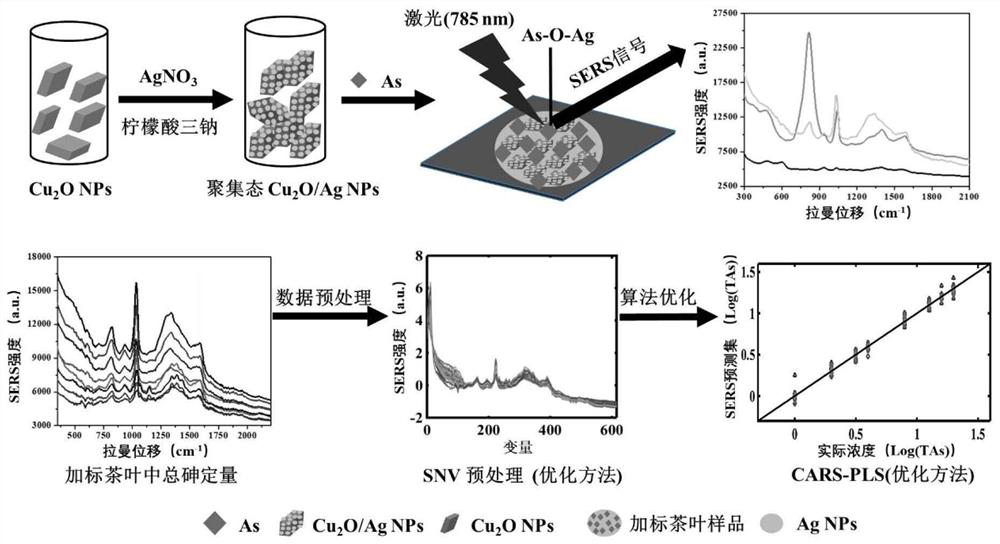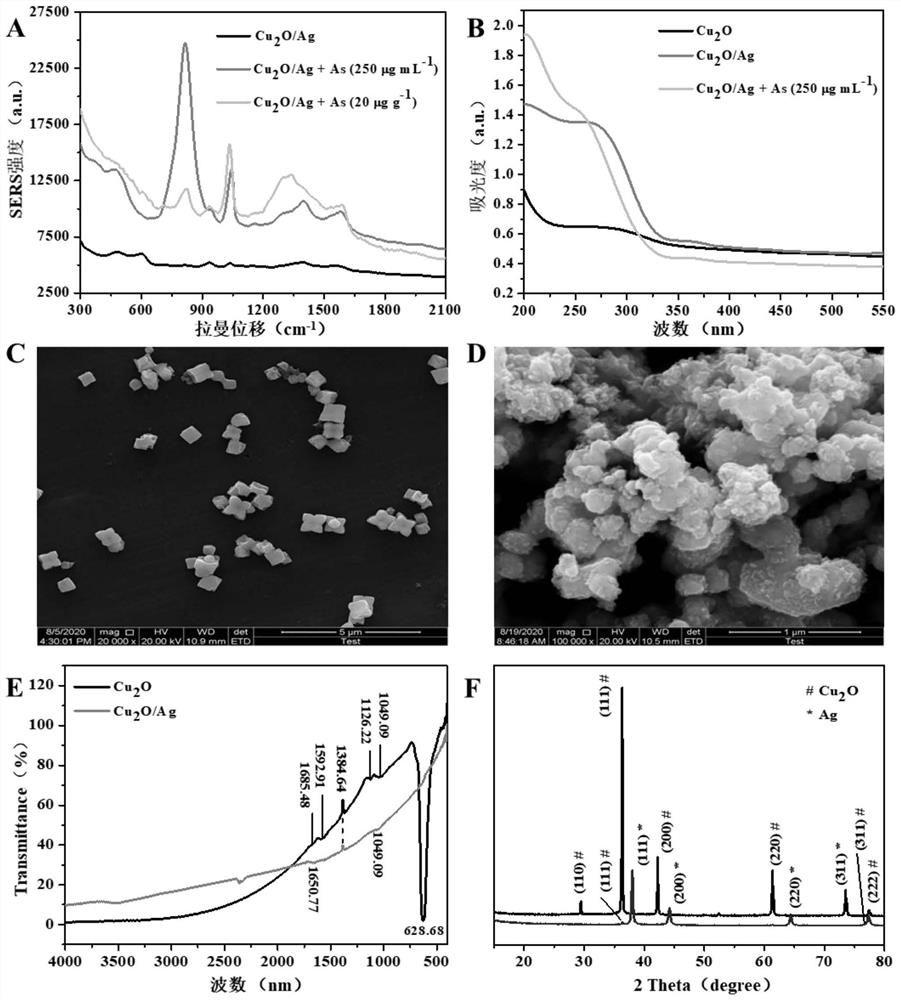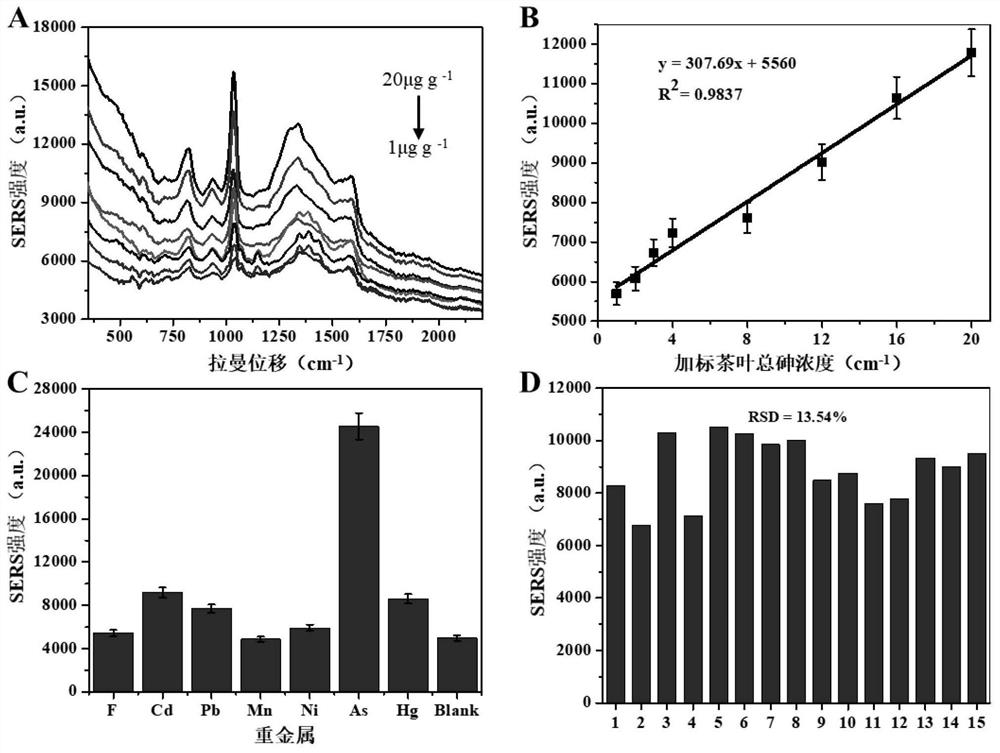Surface enhanced Raman spectroscopy detection method for total arsenic content in food
A surface-enhanced Raman and spectral detection technology, which is applied in Raman scattering, measuring devices, and material analysis through optical means, can solve problems such as slow detection speed, matrix interference, and cumbersome processing steps, and achieve high accuracy. The effect of intelligent detection
- Summary
- Abstract
- Description
- Claims
- Application Information
AI Technical Summary
Problems solved by technology
Method used
Image
Examples
Embodiment Construction
[0031] In order to make the purpose, technical solutions and advantages of the embodiments of the present invention clearer, the technical solutions in the embodiments of the present invention will be clearly described below in conjunction with the accompanying drawings in the embodiments of the present invention. Obviously, the described embodiments are the Some, but not all, embodiments are invented. Based on the embodiments of the present invention, all other embodiments obtained by persons of ordinary skill in the art without making creative efforts belong to the protection scope of the present invention.
[0032] Such as figure 1 As shown, a surface-enhanced Raman spectroscopy method for the detection of total arsenic in food, firstly, cube-shaped Cu with a large specific surface area was synthesized 2 O nanoparticles (Cu 2 O NPs), in order to improve the SERS enhancement and the stability of the nanoparticles, an excess of AgNO 3 Add the synthesized Cu 2 O, then tris...
PUM
| Property | Measurement | Unit |
|---|---|---|
| size | aaaaa | aaaaa |
Abstract
Description
Claims
Application Information
 Login to View More
Login to View More - R&D
- Intellectual Property
- Life Sciences
- Materials
- Tech Scout
- Unparalleled Data Quality
- Higher Quality Content
- 60% Fewer Hallucinations
Browse by: Latest US Patents, China's latest patents, Technical Efficacy Thesaurus, Application Domain, Technology Topic, Popular Technical Reports.
© 2025 PatSnap. All rights reserved.Legal|Privacy policy|Modern Slavery Act Transparency Statement|Sitemap|About US| Contact US: help@patsnap.com



